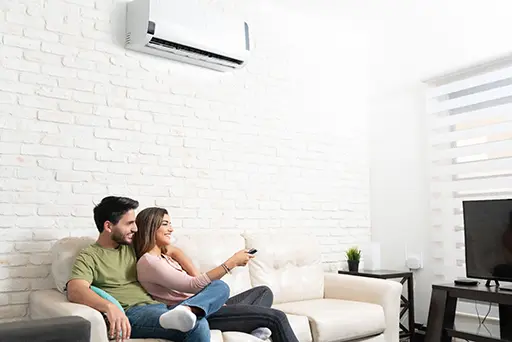Mini-Split Systems

What are Mini-Splits?
Mini-split systems, also known as ductless heat pumps, consist of two main components: an outdoor condenser unit and one or more indoor air-handling units. Unlike traditional HVAC systems, mini-splits don’t require ductwork, making them ideal for retrofitting older homes or spaces where traditional ductwork is impractical.
How Mini-Splits Work
Mini-split systems work on the basic principle of heat transfer. The outdoor condenser unit extracts heat from the air and transfers it to the indoor unit via refrigerant lines. The indoor unit then distributes the conditioned air into the room. The process can be reversed to provide heating during colder months.
Average Cost to Install and Run Mini-Split Systems
The cost of installing a ductless mini-split system can vary depending on factors such as the size of the system, the number of indoor units required, and the complexity of the installation. A personalized quote from a professional is necessary to determine the exact cost for your specific needs.
When it comes to running costs, mini-split systems are known for their energy efficiency. With the ability to selectively cool or heat individual rooms, mini-splits allow for better temperature control and reduced energy waste. This can result in significant savings on utility bills compared to central HVAC systems.
Before installing mini-split systems, check for Mass Save™ Rebates and financing options or simply contact Hoffman & Kelley, Mass Save™ Official Installers, to help find energy-saving incentives.
Signs of Trouble with Existing Mini-Splits
If you already have a mini-split system installed, you must be aware of signs that indicate potential issues. Some common signs of trouble include:
- Reduced Performance: If your mini-split system struggles to maintain the desired temperature or isn’t cooling or heating as effectively as before, it could be a sign of a malfunction.
- Strange Noises: Unusual noises such as rattling, grinding, or hissing from the indoor or outdoor units may indicate a problem with the system.
- Leaking: A professional should address water or refrigerant leaks around the indoor or outdoor units, as they can lead to more severe issues if left unattended.
Contact us if you notice any of these signs, and we’ll help address these problems.
Mini-Split Maintenance Tips and Schedule
Proper maintenance is crucial for ensuring the longevity and efficient operation of your mini-split system. Here are some maintenance tips to keep in mind:
- Regular Cleaning: Clean the indoor and outdoor units periodically to remove dust, dirt, and debris hindering their performance. Follow manufacturer guidelines for specific cleaning instructions.
- Check Air Filters: Clean or replace the air filters as the manufacturer recommends to maintain optimal airflow and indoor air quality.
- Inspect Refrigerant Lines: Ensure the refrigerant lines are properly insulated and free from damage or leaks.
- Schedule Professional Maintenance: Having your mini-split system professionally serviced at least once or twice a year is recommended. A qualified technician can inspect and tune up the system, identify potential issues, and ensure optimal performance.
By following these maintenance tips and adhering to a regular maintenance schedule, you can prolong the lifespan of your mini-split system and maximize its efficiency. Contact us today at 978-475-3424 about a maintenance schedule for your mini-split system so you don’t have to worry about it.

